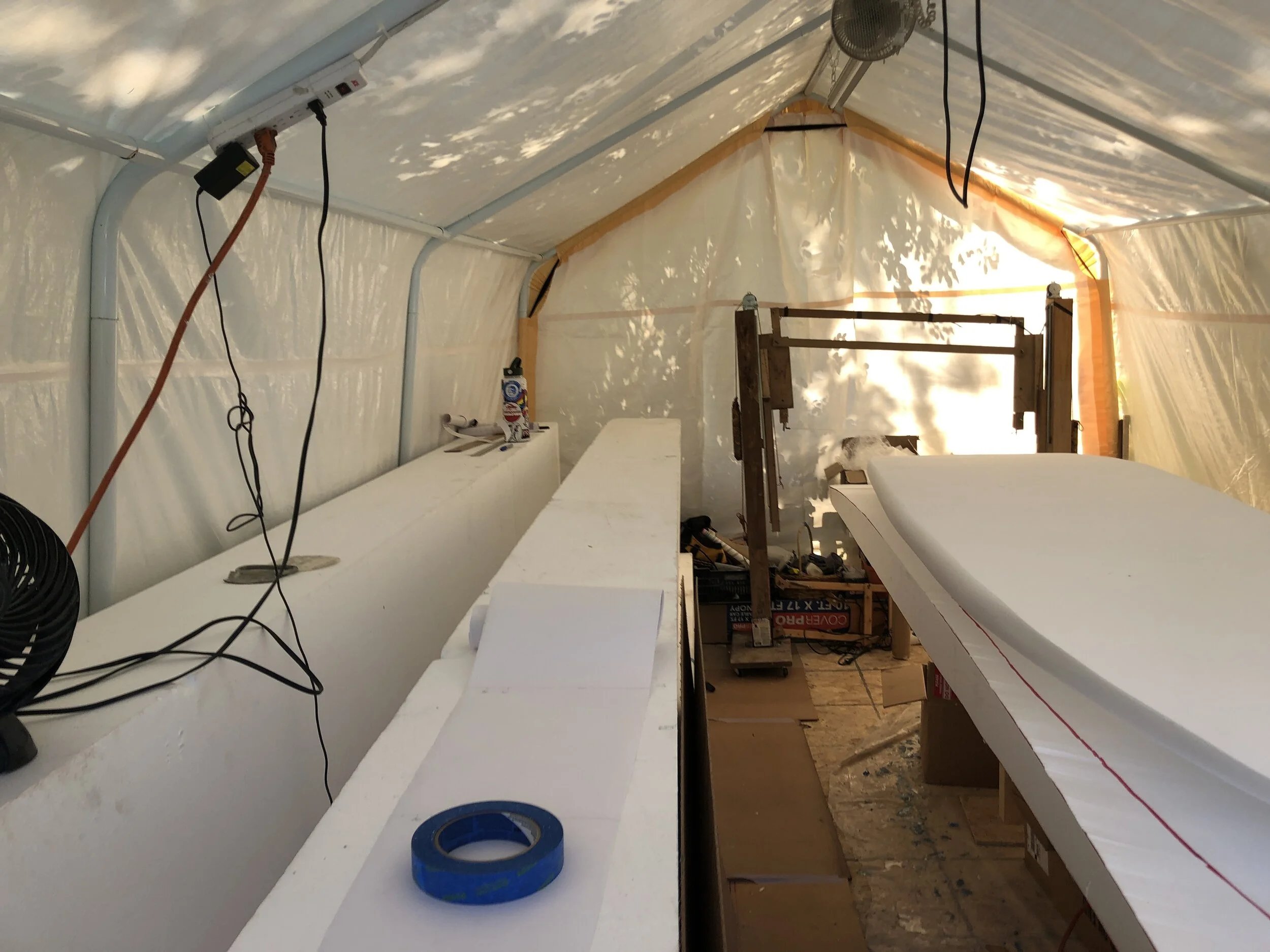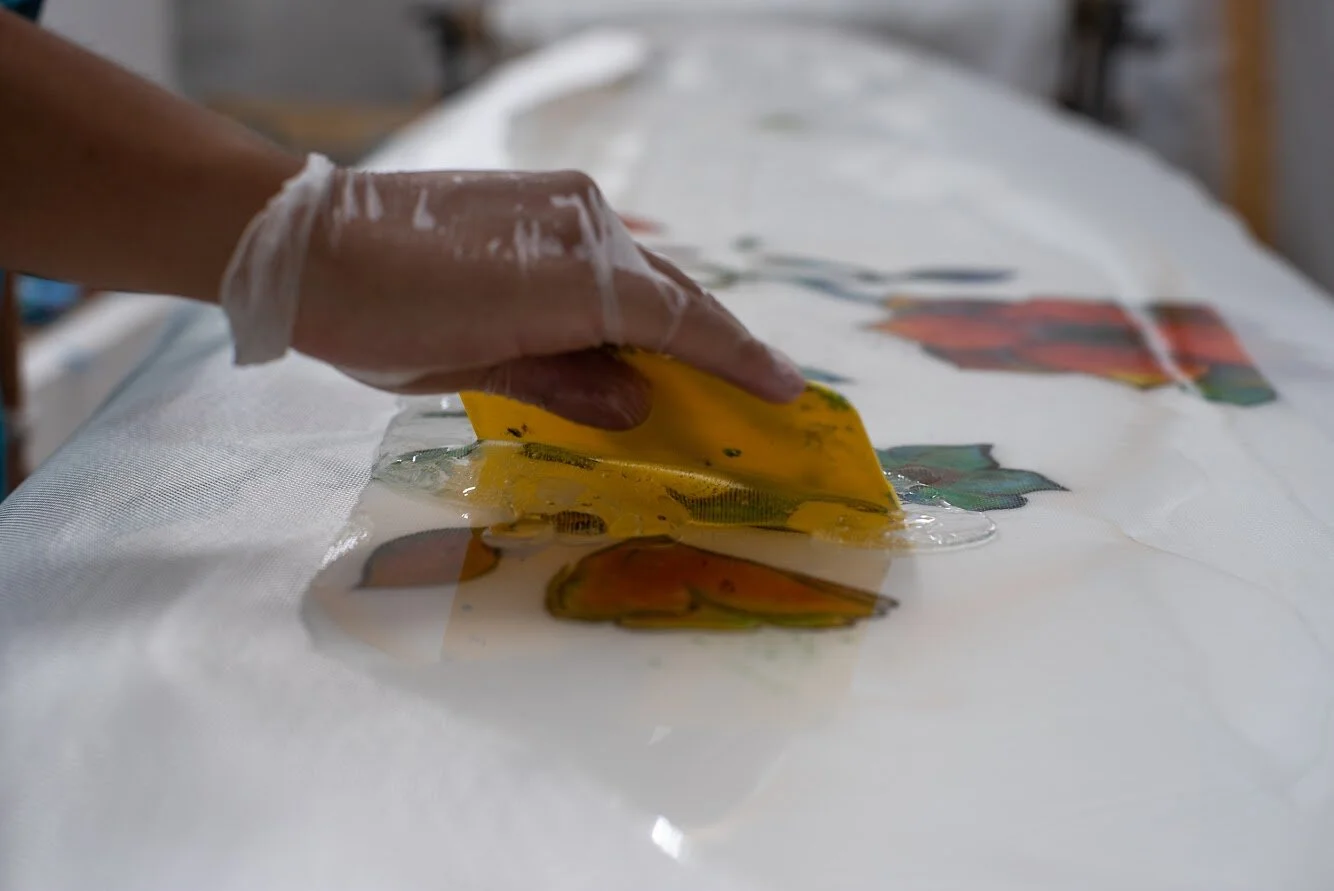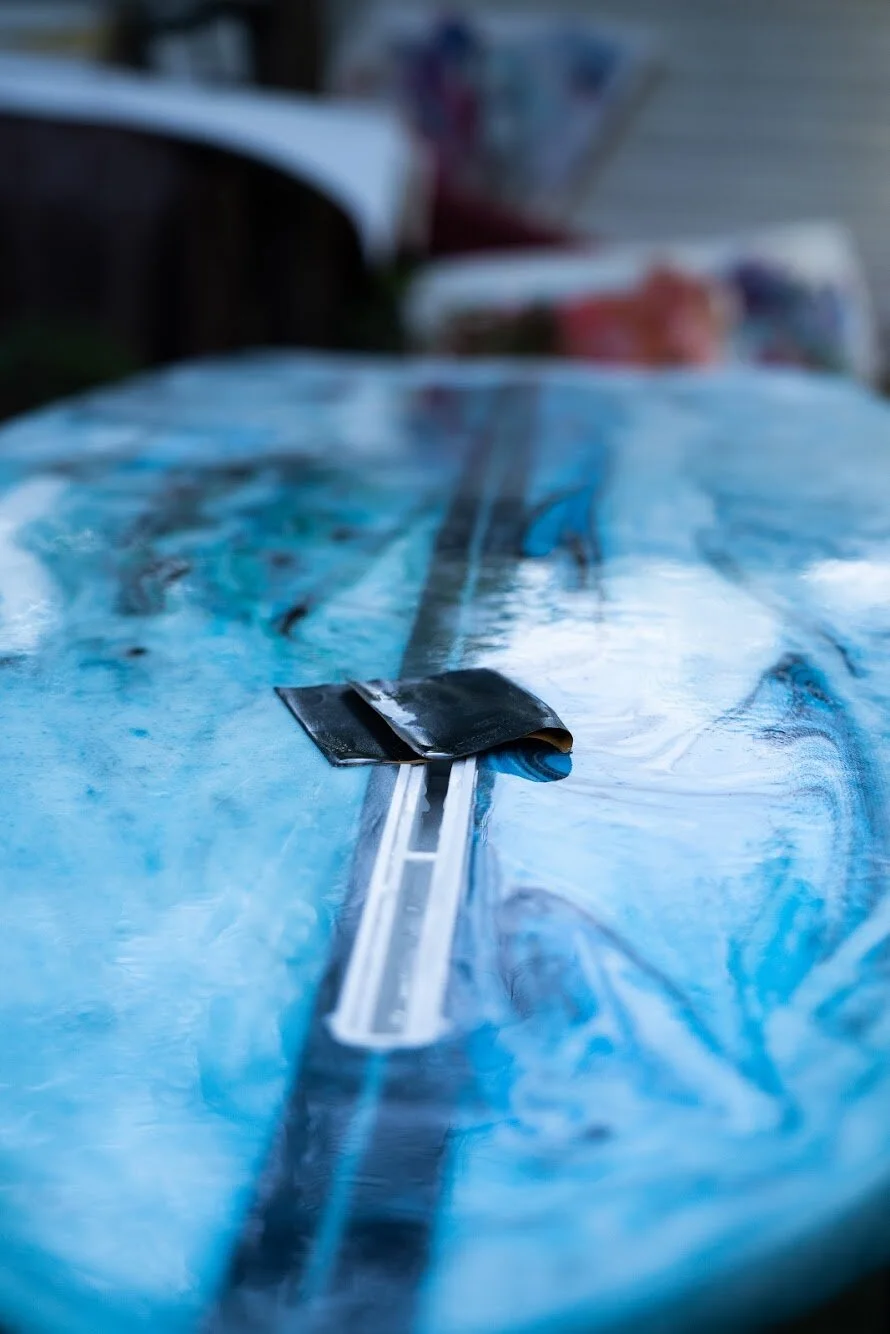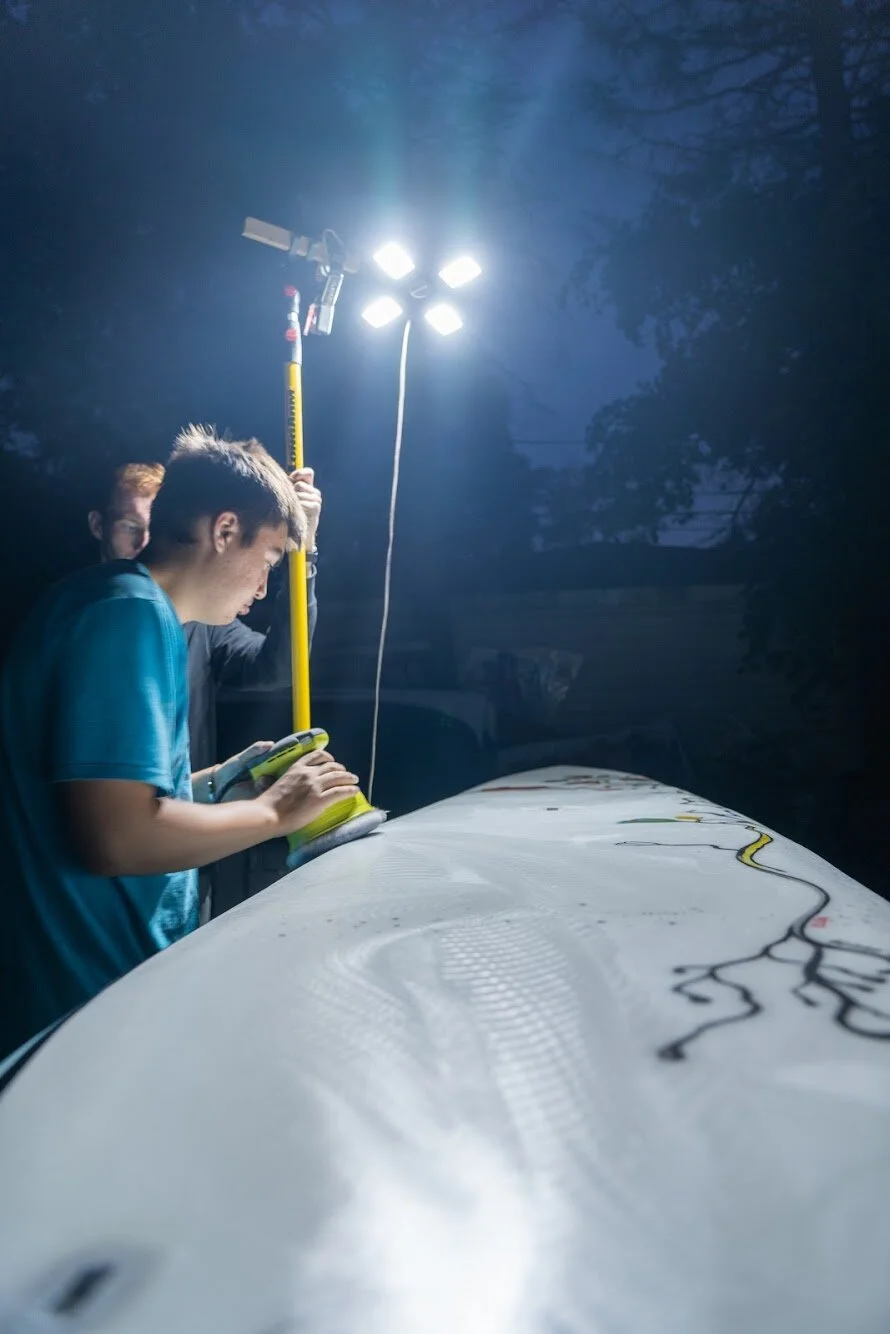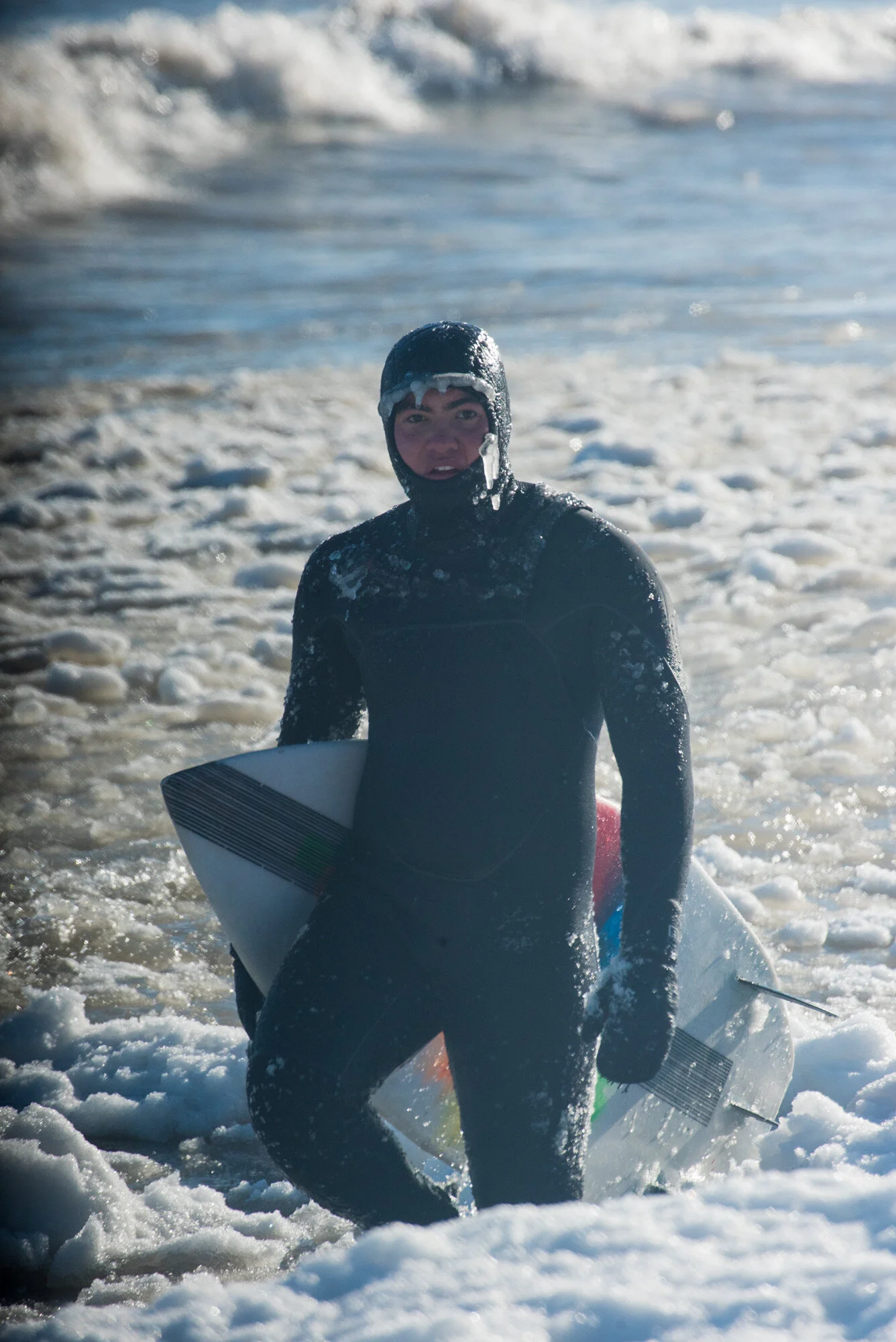
ABOUT BACKLOT BOARDS
The name Backlot Boards comes from the block I grew up on.
I began making surfboards because it was expensive to buy them online and have them shipped to the Midwest. I started by researching how surfboards were made and what materials were needed to make them. Once I grasped the general idea, I went to home depot and picked up the supplies.
I bought sheets of insulation foam to make the surfboard's core and glued them together. I then cut out the surfboard's shape and sanded it to the desired shape. I found fiberglass and resin from a marine store and glassed a few layers onto the board. Once the resin had solidified and the board was fine-sanded, I took it out on the water. I was surprised by how well it surfed. I was impressed by the final product and decided to try my luck again. I bought a big block of foam and cut out many different shapes of boards with a homemade wire cutter. I began making various-size boards with additional features, and each board came out better than the last. Eventually, I started making stand-up paddle boards at my neighbor's request. After some trial and error with the first paddle board, the ones after came out very nice. Today I have made 8 surfboards and 9 paddleboards of varying lengths and sizes. I never thought I would make this many boards when I first googled "How to make a surfboard."
Making my boards allowed me to see how much waste is produced in the making process. I have tried to limit the waste by reusing materials, but it can be challenging. I have used the excess foam from making surfboards and paddle boards as insulation. It is sad to see all this waste and the impact that board making has on the environment. Through my education and research, I hope to find new ways of creating less waste.

How boards are made
I start with a solid rectangle block (14’x3’x2’) of 2lb density foam. I then design a template for the profile and the shape or outline of the board. Once the template is made, it is transferred to the foam and cut out with a homemade wire cutter, which my dad built. After the board is cut, the sanding process starts. Lots of sanding must be done to create the desired smoothness and shape of the board. Next, I cut out the fin boxes and handle (if it’s a stand-up paddleboard) and touch up with sanding where needed. Now that the shape is complete, I can start on art. I use posca pens and acrylic paint to draw on the board. During glassing, I use tints in the resin to make resin swirls.

Continued…
Whether art is on the boards, a carbon fiber weave with fiberglass is laid in the center to add strength. Next, fiberglass is laid out over one side of the board and cut to the board's shape with a bit of hanging off the edge. Epoxy resin is mixed with a hardener and then poured into the fiberglass. The resin is then squeegeed so the fiberglass is saturated and there are no resin pools. The resin requires 4-6 hours to cure, and the same process is repeated on the other side of the board. Next, a whole is cut for the leash plug. A layer of just resin is applied to one side of the board, and the board is left to cure. This process is repeated on the other side of the board. An optional third layer of resin can be applied to both sides. Once the board is glassed (layered fiberglass with resin), the fin boxes are created by sanding, and the whole board is fine-sanded. The board is then polished and ready for the water.

About Andrew Chungbin (owner & shaper ofBacklot Boards)
I grew up in Evanston, Illinois. I attended The Chicago Waldorf School from kindergarten through twelfth grade. I am currently studying mechanical and manufacturing engineering with a minor in finance at Oregon State University.
I surfed my first waves in Sleeping Bear, Michigan, when I was 12. From that day, I was hooked and have continued to surf ever since. Through middle school and high school, I would surf on the weekends and before and after school when there were waves on the lake. Since the surf season on the Great Lakes is best in the winter, I bought a thick wetsuit, gloves, and booties and surf year-round. I’ve been lucky to surf beyond the Great Lakes in Hawaii, Oregon, and Iceland. Apart from surfing, I love to ski. If I’m not surfing, then I’m skiing. Other than skiing and surfing, I enjoy mountain biking, rock climbing, and paddle boarding, and I play volleyball and soccer recreationally. I love the outdoors and the activities that come with being outdoors.

